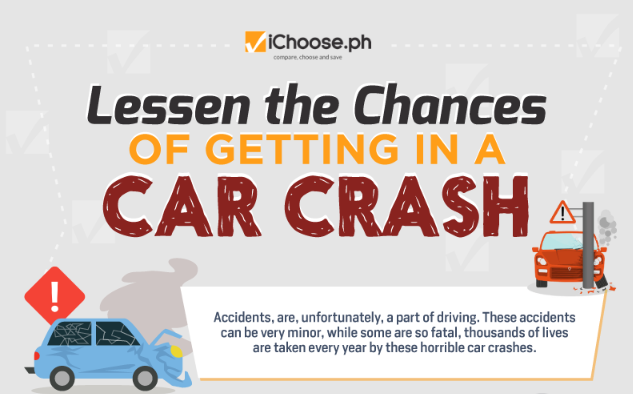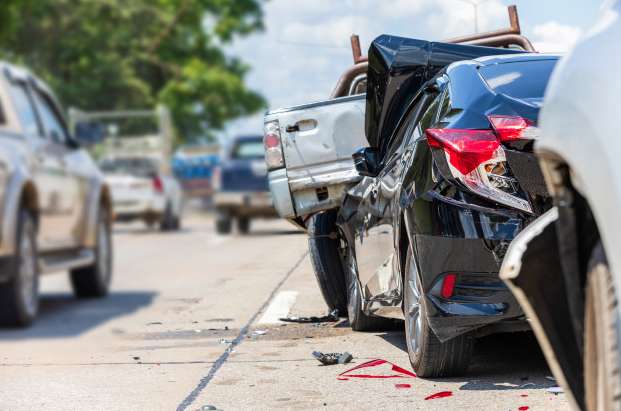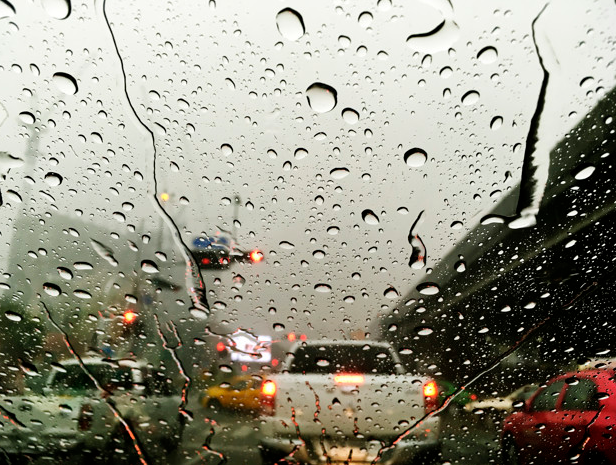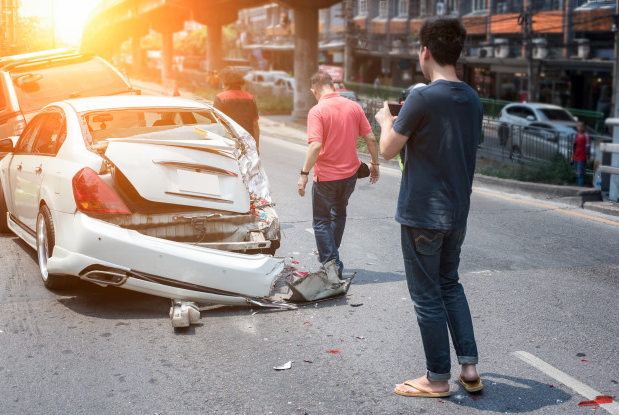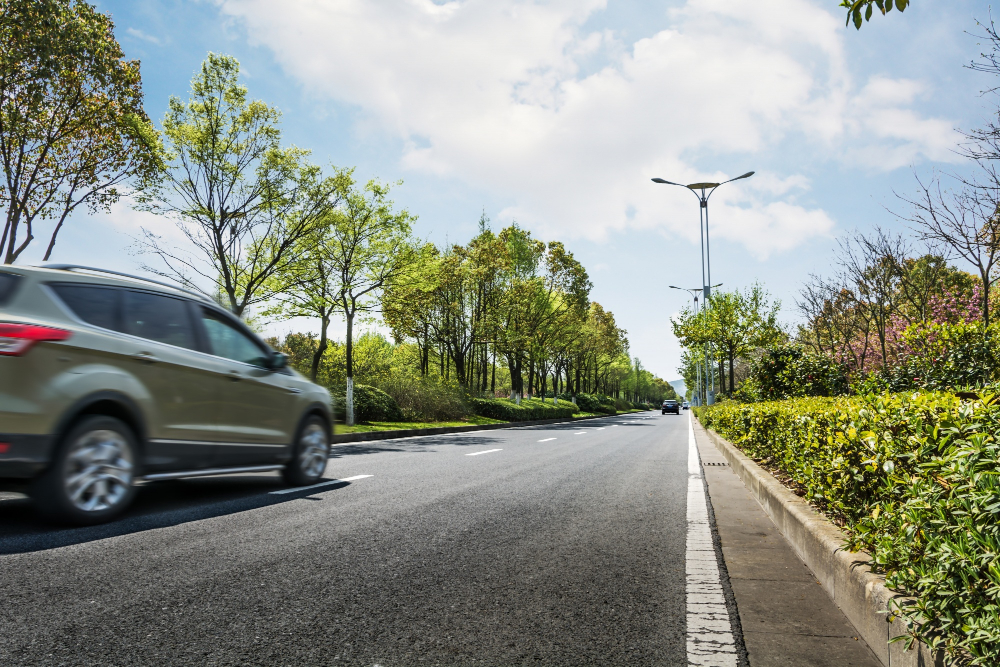Lessen the Chances of Getting in a Car Crash [Infographic]
Accidents are, unfortunately, a part of driving. These accidents can be very minor, while some are so fatal, thousands of lives are taken every year by these horrible car crashes. Regardless of how careful you are while driving, there are many other extraneous factors that are not of your control that you should consider and think about.
While no one can predict and tell when, where, and how an accident will happen, or even entirely avoid the risk of being in a car crash every driver and the car owner can prepare for it and know what to do to prevent it and what to do if ever they happen to be in one. Part of preparing for an accident is having enough knowledge: what are the most common road accidents and how can you avoid them?
Before Driving:
To minimize the risk of being involved in a vehicular accident, here are some tips you can do even before you start the engine:
Regularly check your engine, tires, and lights.
Poorly Maintained Vehicles can also post a threat on the road. Flawed car engines cause accidents more often than you think. Not regularly maintaining and checking up on your ride can be dangerous not only for you but for other drivers and vehicles on the road as well.
As a car owner and driver on the road, make it your responsibility to inspect your car inside out on a regular basis. Are there any unusual sounds or noises produced by your engine? Is the emergency sign lit up on your dashboard?
Check the air pressure of your tires. Driving a vehicle with insufficient air pressure is very dangerous, because the car will not respond as well, and a tire could pop at any point. At the same time, check if all your lights are working. This is crucial in making signals to other drivers on the road. Regularly check your oil. If your vehicle runs low on oil, it will eventually overheat and start to fall apart, which can be extremely dangerous. You should also check the coolant and brake fluid levels.
While Driving:
Driving on the road—regardless of how long, what you drive, and where you go can really be dangerous. Here are some of the ways how you can make sure you arrive in your destination safely and sound:
Practice defensive driving.
Defensive Driving is essentially driving in a manner that utilizes safe driving strategies to enables motorists to address identified hazards in a predictable manner. These strategies go well beyond instruction on basic traffic laws and procedures. Driving defensively is in a way, expecting the worst and being prepared what’s next. It is a good reminder to remember to keep an eye out for what others are doing.
Check your blind spots
Another way to be a defensive driver is to always check blind spots and when stopped at an intersection check for cars coming through before going, even when the light is green. Additionally, check your blind spots when changing lanes.
Keep your eyes constantly moving
When driving, it is important to be very aware of the space you move in, at the same time, be aware of that space in relation to the other cars. This means that as the driver, you should know not only the distance of the car in front of you but also the distance of your car from the ones beside and behind you as well. Check your rearview mirror and side-view mirrors regularly so that you are always aware of where your surroundings are. You should never look away from the road for too long, but you should also never let your eyes stop moving for too long.
Always signal
Most drivers usually take turns on their signals when turning for granted. For many, it is just a small detail which many “professional” drivers may forget to do. But, on the contrary, this small action makes a lot of difference. Turn signals help alert surrounding drivers that your vehicle will be making a turn or changing lanes, which can save you from having a vehicle merge into the same lane that you are merging into.
Follow speed limits
Driving on a freeway, or on an empty road may be tempting to step on the pedal and drive fast as if no one is watching. However, professional and responsible drivers still follow speed limits even if no one’s around. Speed has been identified as a key risk factor in road traffic injuries, the World Health Organization notes. One of their published reports on road-related injuries and death revealed that in high-income countries, speed contributes to about 30% of deaths on the road, while in some low-income and middle-income countries, speed is estimated to be the main contributory factor in about half of all road crashes. Even if you’re very confident in your driving abilities, stick to the recommended speeds for the safest results.
Keep the distance!
Always keeping a good distance away from other cars is a huge help in avoiding accidents since it gives the driver more reaction time if something goes wrong. One of the most common automotive collisions occurs from cars rear-ending other cars because they were tailing them too closely. Stay far enough behind the car in front of you so they can hit the brakes hard without you running into them, and you’ll greatly reduce the chance of being in an accident.
How can drivers have their peace of mind while on the road?
It is an understatement to say that risk is an everyday reality. Accidents—in all forms, shapes, and intensities can happen any day to anyone. Some meet unfortunate events on the road as they were driving to work, or coming home. Once you’re driving, you expose yourself to a constant risk that indeed, you do not have direct control of.
Accidents happen all the time—many reckless drivers and how much you take care, your chances of getting involved in a fender bender, or in a fatal accident is still high at stakes.
The Philippine Constitution orders every car registered to get a basic Compulsory Third Party Liability (CTPL) car insurance to protect against possible liabilities to third parties. According to the Insurance Code of the Philippines, a third party is defined as any person other than a passenger, family member, or household member of the vehicle owner. It is one of the requirements for registering your vehicle for the Land Transportation Office. The CPTL basically covers and protects pedestrians from potential damages or injuries that arise from the use of the insured car in case road accidents happen. This is compulsory and covers any bodily injuries or deaths caused by up to P100,000. However, CTPL does not cover loss or damages to property and is very limited in this regard.
With all these probable realities, it just makes more sense than car owners in the country prepare for the worst by getting themselves comprehensive car insurance. As the popular saying goes, it is better to be safe than sorry.
More useful reads from iChoose.ph

